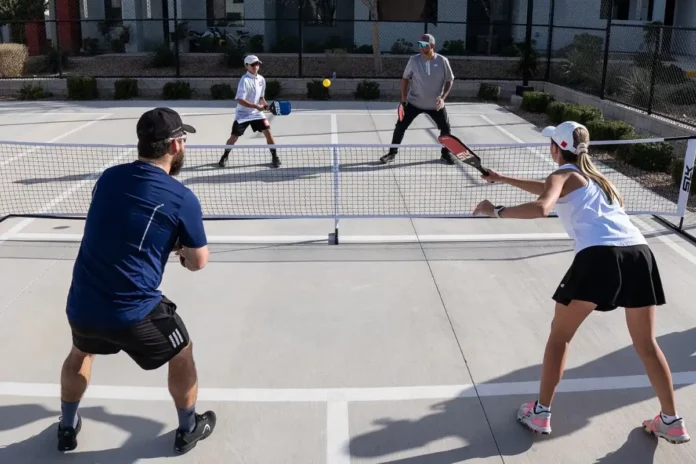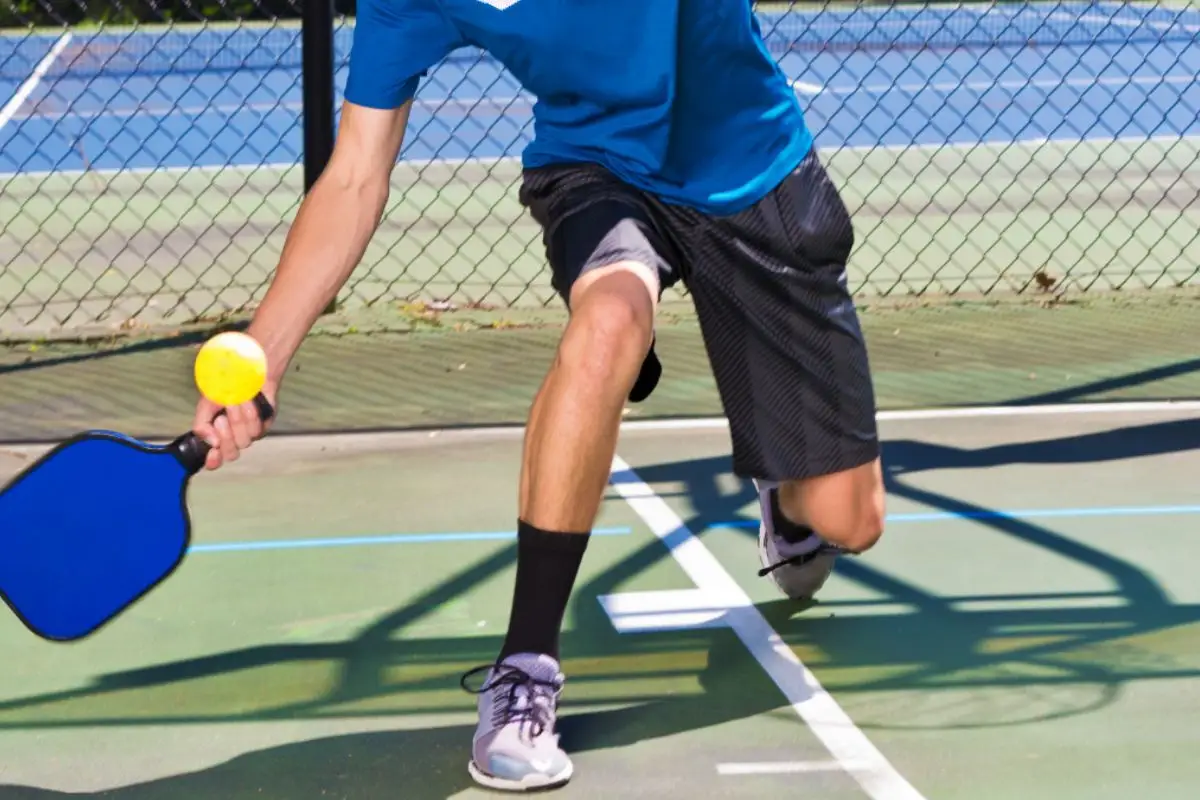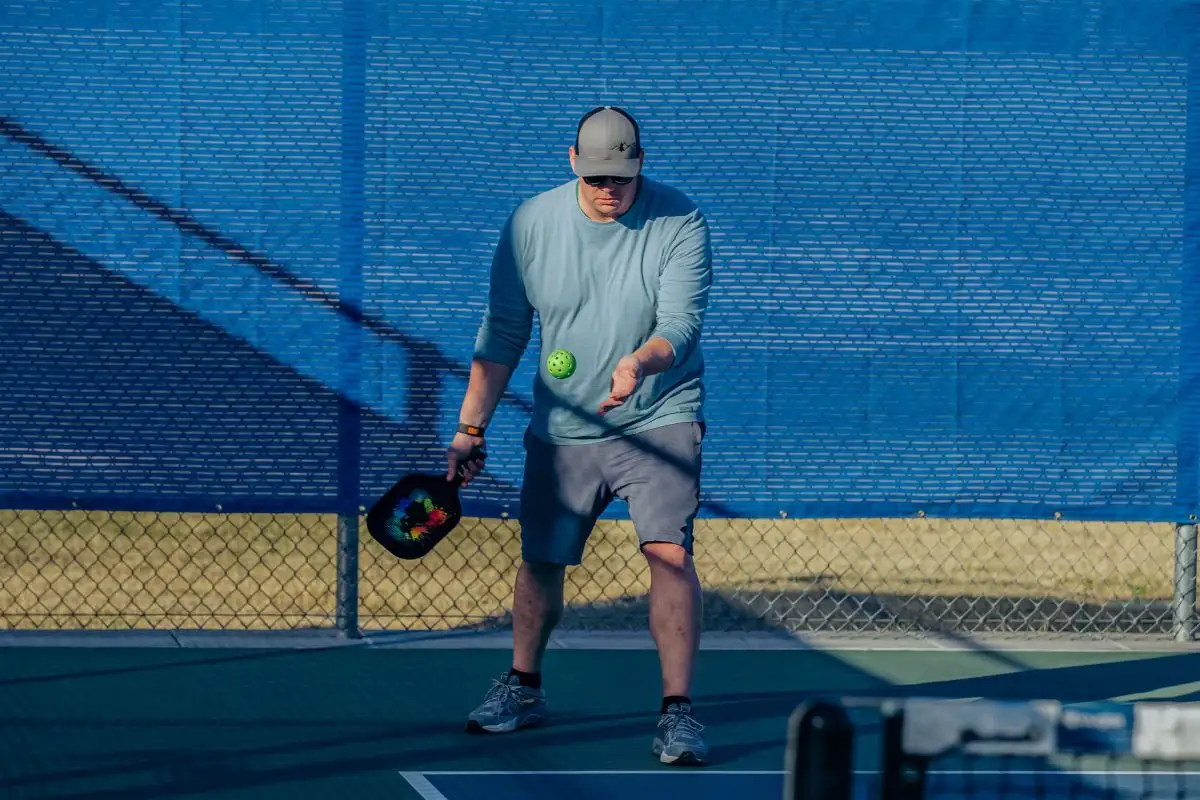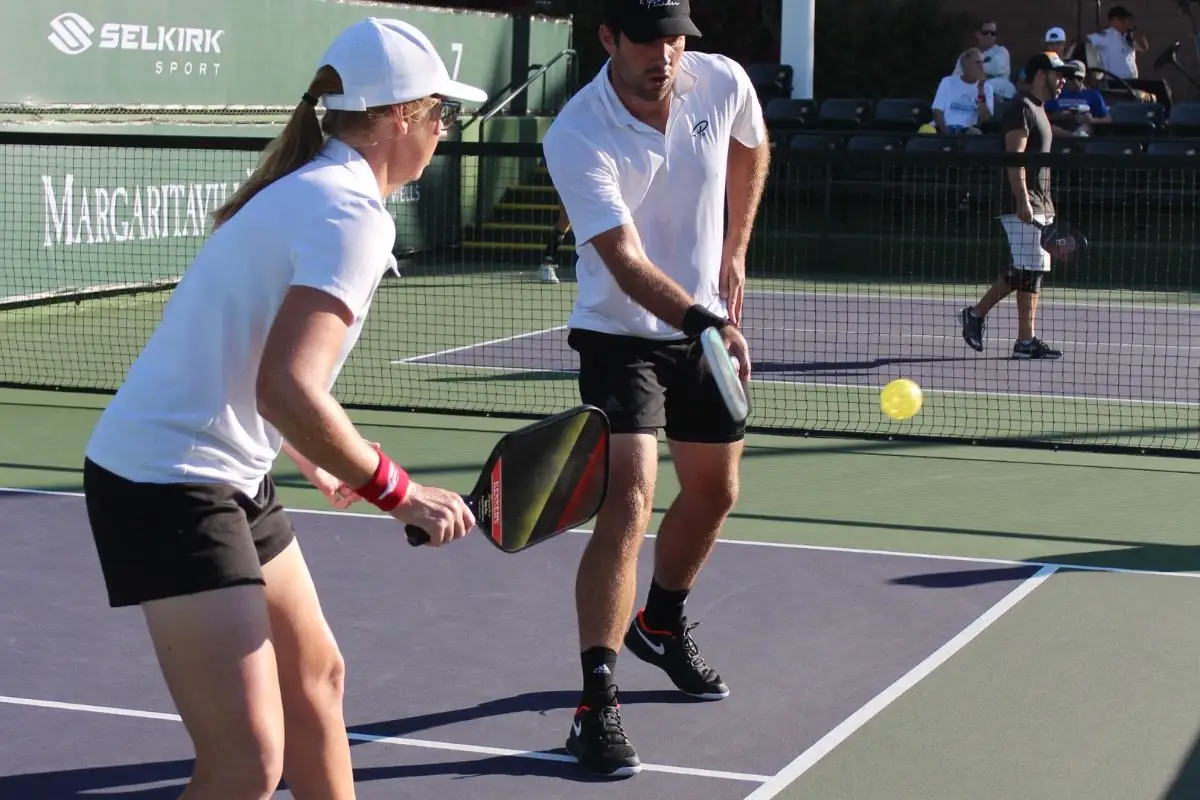Staying Back in Pickleball: In pickleball, strategic decisions can make or break a game. Imagine this scenario: after executing a solid third shot, one player rushes to the kitchen line, ready to exert pressure and control the net. But as they glance back, they see their partner lingering near the baseline, hesitant to advance. This moment presents a common dilemma that many pickleball players face. What’s the right move? Should the player retreat to the baseline with their partner, stay at the kitchen, or find a middle ground?
Understanding the Dilemma of Staying Back
Moving to the kitchen line in pickleball after a third shot is widely recognized as an optimal strategy in pickleball. This positioning not only allows players to apply pressure but also enhances their ability to win points. When one partner stays back while the other moves forward, it creates a strategic disadvantage. The pickleball player at the kitchen line becomes vulnerable, left exposed while the opposing team gains the upper hand.
When one partner hovers at the baseline, several issues arise:
Open Angles: The opposing team can exploit the space between the two players. If they target a shot to the opposite side, they can create a gap that is tough to cover.
Easy Targets: The player at the kitchen line becomes an inviting target for powerful slams. If the opposing team directs a shot to the baseline player and they return it weakly, a slam aimed at the forward player can spell disaster.
Strategies for Beginners: Navigating Hesitation
For beginners, communication becomes the cornerstone of effective play. It’s vital to explain that advancing to the kitchen line in pickleball significantly boosts the team’s chances of success. Many novice players remain back, feeling more secure at the baseline. While it’s essential to encourage partners to inch toward the kitchen after making a return, fostering their confidence is equally crucial.
If a partner continues to hesitate, it may be beneficial to remain at the baseline together. While this strategy may not be ideal, it creates a unified defensive front, allowing both players to practice essential skills like third shots and resets without exposing themselves to unnecessary attacks.
Tips for Intermediate Players: Striking a Balance
Intermediate pickleball players should grasp the importance of controlling the net. If a partner refuses to move up, consider these strategies:
Stay Back Temporarily: If a partner is uncomfortable advancing, it’s wise to hang back together. While this won’t provide optimal offensive opportunities, it helps to avoid the vulnerable “one up, one back” formation.
Communication and Adjustment: Use breaks or timeouts to engage in a gentle conversation about the advantages of moving forward together. Explain how this can close gaps and enhance the team’s overall performance.
Poaching Opportunities: If a partner stays back, seize the chance to poach shots. If they deliver a decent return, moving across the court to intercept a shot intended for them can add pressure to the opposing team. This pickleball tactic works best with good anticipation skills and quick reflexes.
Advanced Players: Turning a Challenge into Opportunity
In the realm of advanced play, the expectation is that both players will push to the kitchen line in pickleball, especially after hitting a good third shot. However, if a partner remains entrenched at the baseline, players must adapt:
Stay Patient: Maintaining a consistent defensive position is critical. Advanced pickleball players understand the necessity of closing angles and preventing open gaps.
Work on the Game: Use the situation to practice various elements, such as resets, drops, or lobs from mid-court or the baseline. Although winning may not be immediate, turning the game into a practice session can yield valuable skills.
Assertive Communication: If necessary, take the time to explain to a partner why consistently staying back is a liability against knowledgeable opponents. If they are open to feedback, sharing insights on the benefits of advancing can significantly enhance their understanding of the game.
Navigating Specific Scenarios
After a Poor Third Shot
When a partner hits a poor third shot—one that is high and attackable—staying back is often the safer choice. This pickleball strategy ensures both players are prepared to defend against the impending attack. Advancing too far would only leave the forward player vulnerable to powerful smashes.
When a Partner Is Targeted
If a partner is being specifically targeted by the opposing team, use the situation to the team’s advantage. Shift slightly to poach shots when appropriate. This pickleball tactic alleviates some pressure on the partner while disrupting the opponents’ rhythm.
Holding the Kitchen Line Alone
Should a player choose to remain at the kitchen line in pickleball while their partner stays back, they must be prepared for a lot of lateral movement. Their responsibility will be to slide side to side and cover gaps. However, this pickleball strategy is highly demanding and should only be employed if quick reflexes and excellent hand-eye coordination are present.
When a Partner Questions the Position
If a partner inquires why another player is staying back instead of moving up, it’s important to explain that they are mirroring the partner’s position. The player can express willingness to advance if their partner does, but for now, it’s best to stay in sync for effective defense.
The Essential Role of Communication
The crux of the matter lies in communication. Establishing a common strategy before or during the game can significantly improve a team’s performance. If a partner is hesitant to move up, adapting to their comfort level while working towards consistency is vital.
Bringing Partners Along
Ultimately, having one partner at the kitchen line while the other remains back is far from ideal. This configuration exposes players to attack and makes it challenging to dominate the net. When faced with this situation, the best pickleball strategy is to stay back with a partner, communicate intentions clearly, and use the moment to develop other aspects of the game.
News in Brief: Staying Back in Pickleball
In pickleball, the strategy of advancing to the kitchen line in pickleball after a third shot is vital for success. When one partner hesitates and stays back, it creates vulnerabilities and open angles for opponents. Effective communication is essential, especially for beginners, while intermediate and advanced players must adapt to various scenarios. Staying unified, practicing defensive skills, and discussing strategies can help teams navigate this common dilemma.
ALSO READ: The Cross-Training Secret for Pickleball Success: Play Smarter and Boost the Pickleball Skills




